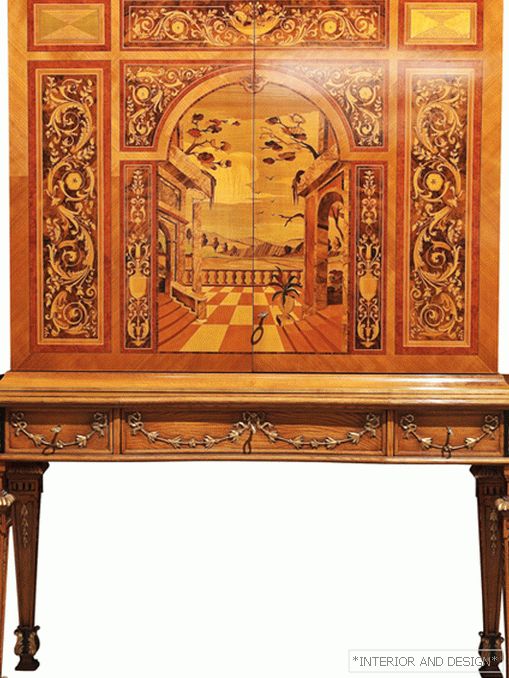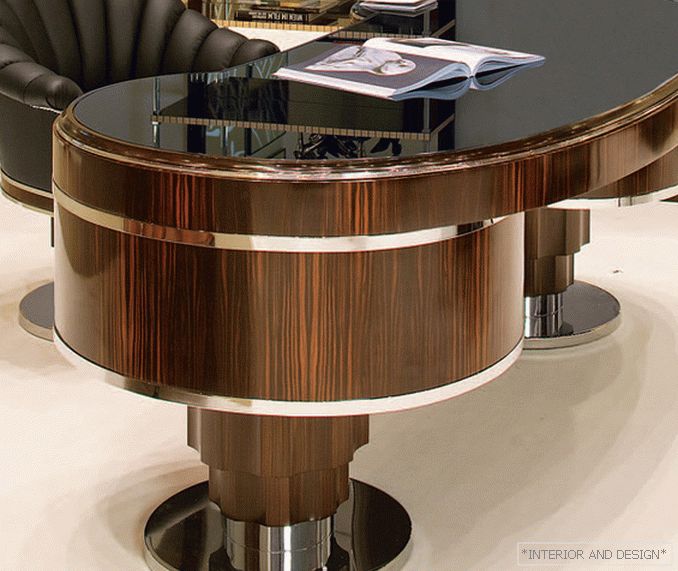Jonathan Levin and Nipa Doshi (Doshi Levien) - a happy example of a fruitful interweaving of cultures. He is a Scotsman — she is Indian, he is an industrial designer — she designs furniture, he spent her childhood in a toy factory that belonged to two generations of his family — she played among the treasures of her grandfather, a collector of Indian painting and traditional fabrics. Jonathan and Nipa met at the Royal College of Art in London. In 2000, founded their own company Doshi Levien. For sixteen years, managed to come up with a lot of interesting things for brands around the world.
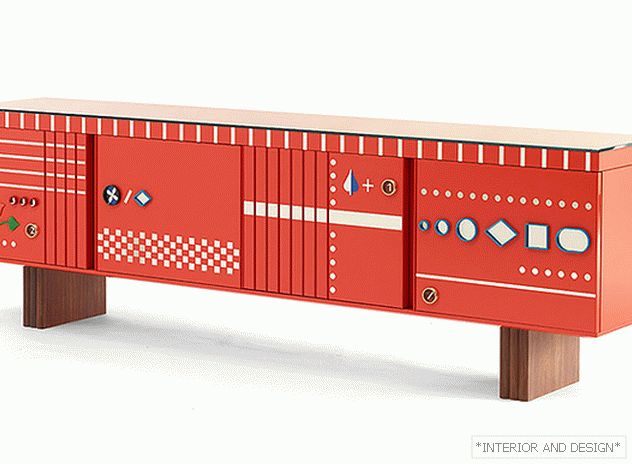 Tumba under the mirror, koll. Kundan, Diesel. Doshi Levien, Galerie Kreo.
Tumba under the mirror, koll. Kundan, Diesel. Doshi Levien, Galerie Kreo. 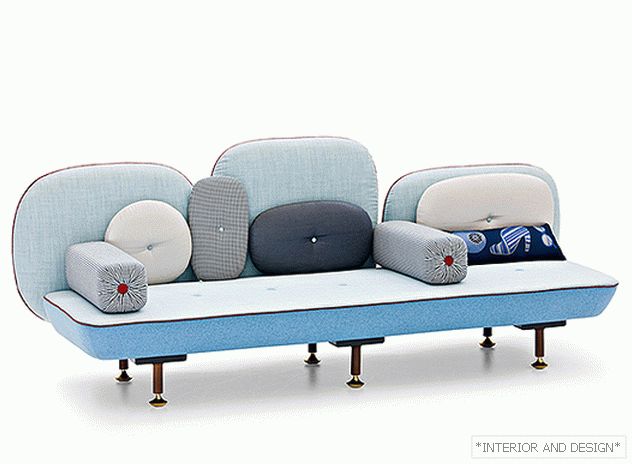 Divan, col. Beautiful Backside, Diz. Doshi Levien, Moroso.
Divan, col. Beautiful Backside, Diz. Doshi Levien, Moroso. 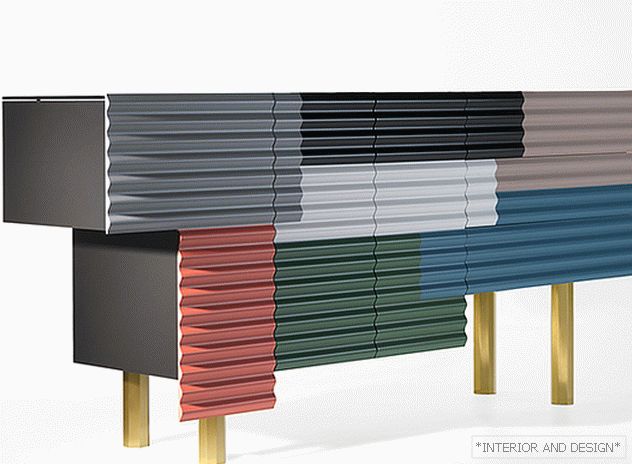 Cabinet for the living room, call. Shanty, diz. Doshi Levien, BD Barcelona.
Cabinet for the living room, call. Shanty, diz. Doshi Levien, BD Barcelona. 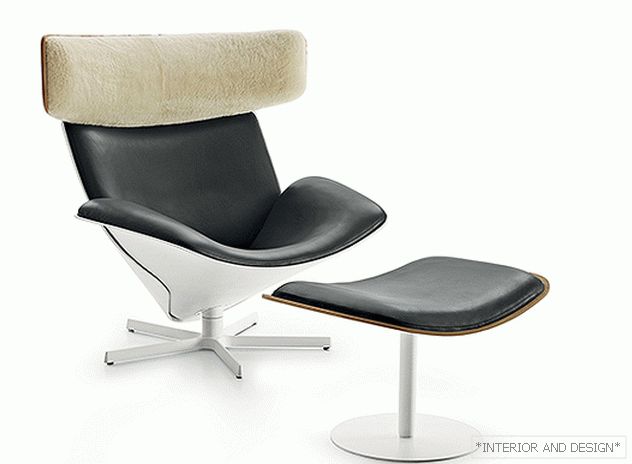 Кресло и пуфик, колл. Almora, диз. Doshi Levien, B&B Italia.
Кресло и пуфик, колл. Almora, диз. Doshi Levien, B&B Italia. 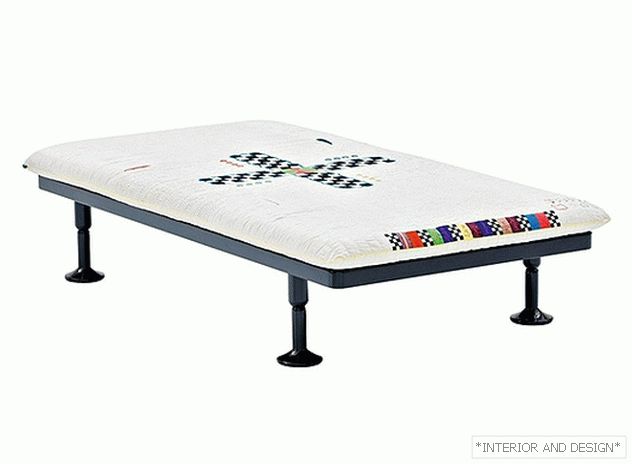 Кушетка, колл. Charpoy, Diesel. Doshi Levien, Moroso.
Кушетка, колл. Charpoy, Diesel. Doshi Levien, Moroso.  Mirrors, call. Maya, diz. Doshi Levien, Hay.
Mirrors, call. Maya, diz. Doshi Levien, Hay. 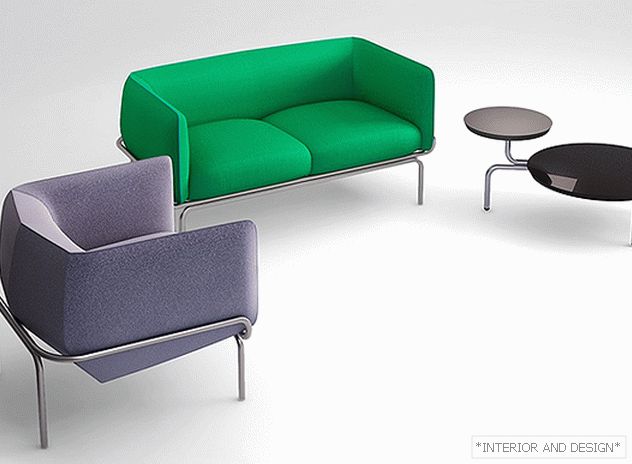 Divan and flesh, col. Chandigarh, Diesel. Doshi Levien, Moroso.
Divan and flesh, col. Chandigarh, Diesel. Doshi Levien, Moroso.  Fabric call Kettal Terrain, diz. Doshi Levien, Kettal.
Fabric call Kettal Terrain, diz. Doshi Levien, Kettal. 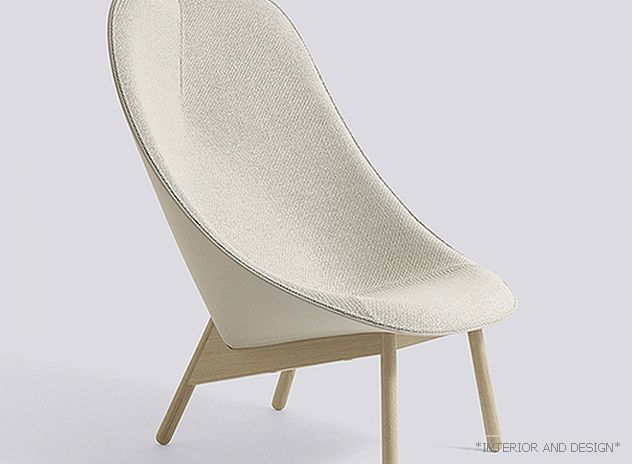 Easy chair, call. Uchiwa, diz. Doshi Levien, Hay.
Easy chair, call. Uchiwa, diz. Doshi Levien, Hay. 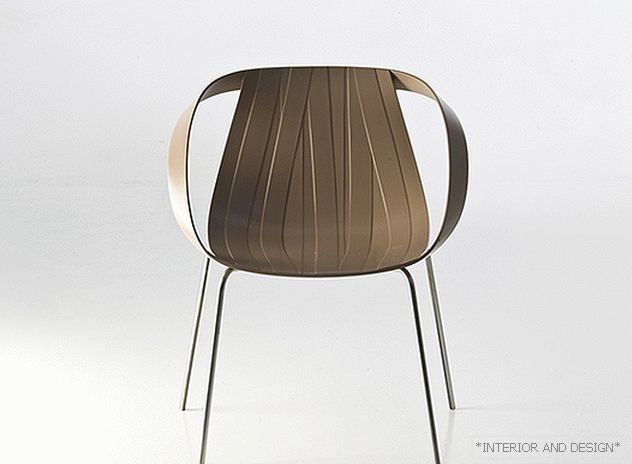 Stool, col. Impossible Wood, Diff. Doshi Levien, Moroso, plastic.
Stool, col. Impossible Wood, Diff. Doshi Levien, Moroso, plastic. 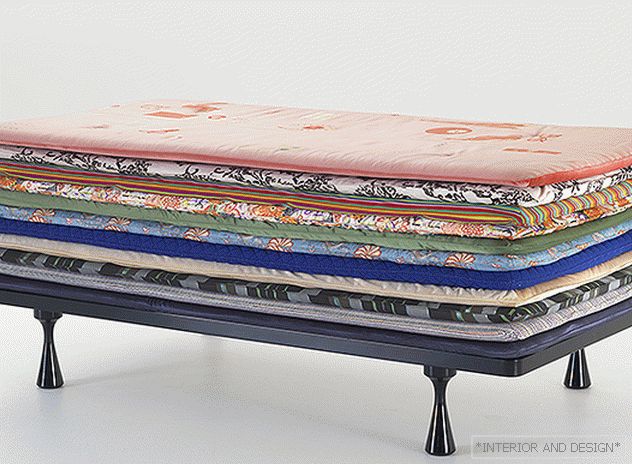 Кушетка, колл. Principessa, diz. Doshi Levien, Moroso.
Кушетка, колл. Principessa, diz. Doshi Levien, Moroso.  Installation The Wool Parade, diz. Doshi Levien, Kvadrat.
Installation The Wool Parade, diz. Doshi Levien, Kvadrat. + Related: Bolon: three-dimensional floor
Nipa, a lover of sari, curry, Bollywood films and Indian silks, before coming to England, learned the design in Ahmedabad (Gujarat state). Once in the British capital, I did not spare the energy to integrate precious Indian motifs into global design, avoiding kitsch and cliché, with taste and imagination. Jonathan, having left school at the age of 16, learned to be a cabinet maker, became seriously interested in mass production and eventually received the best design education in the UK. Spouses since the school years to each other the most severe critics and invaluable helpers. Nipa gives them a joint development of sensuality and charm, Jonathan follows the process, it is thanks to him that all the projects started reach the final point. When the son Raul was born, it is time to think about a permanent family home. The couple were happy to settle in the famous monument of brutalism of the 1960s, in one of the towers of the London Barbican. From here, it is within easy reach of East London, where their studio-workshop is located - they arranged it in a noisy, ethnically motley quarter, next to shops, vintage clothing stores, Turkish, Arabic, Jewish and Indian cafes.
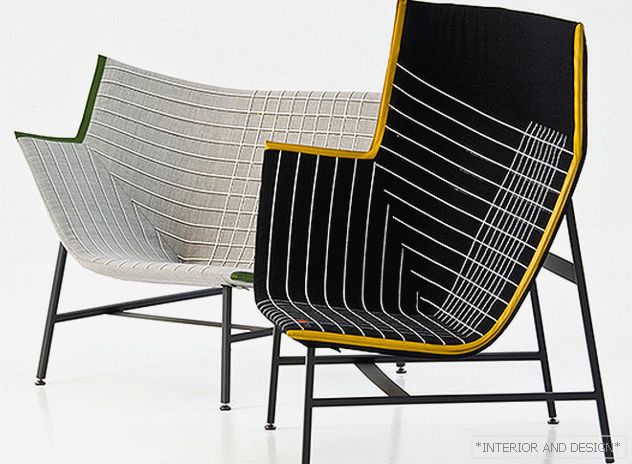 Kresla, koll. Paper Planes, Diesel. Doshi Levien, Moroso.
Kresla, koll. Paper Planes, Diesel. Doshi Levien, Moroso. Barbican Estate - the largest center in Europe, opened in 1969 on the site of an abandoned area. In addition to housing, there are concert halls, theaters, venues for exhibitions and performances. Barbican is famous for its arts, cinema, theater, music and dance programs. Three multi-storey concrete towers are designed by Chamberlain, Powell and Bon.
 Small Do-Maru chair, diz. Doshi Levien. 2016. Do-Maru - the name of the element of military uniforms of samurai from sheets of thick leather. Upholstery to choose from: leather or fabric.
Small Do-Maru chair, diz. Doshi Levien. 2016. Do-Maru - the name of the element of military uniforms of samurai from sheets of thick leather. Upholstery to choose from: leather or fabric. The dwelling of designers looks original. Each most insignificant object is delivered or hung with special attention. Scissors, lamps, mirrors from their Maya collection, posters - everything is placed in such a way that it looks like mandalas for meditation. “In India, almost every household affair is surrounded by ritual. Every detail is important - how the bed is made, how the food is cooked, how the dishes are placed. To comb your hair, wash your face, get dressed - any action requires concentration and a special order, ”says Nipa. In the house, in addition to the bedroom, nursery, kitchen and a small living room, equipped with a spacious studio. After all, the workflow never stops.
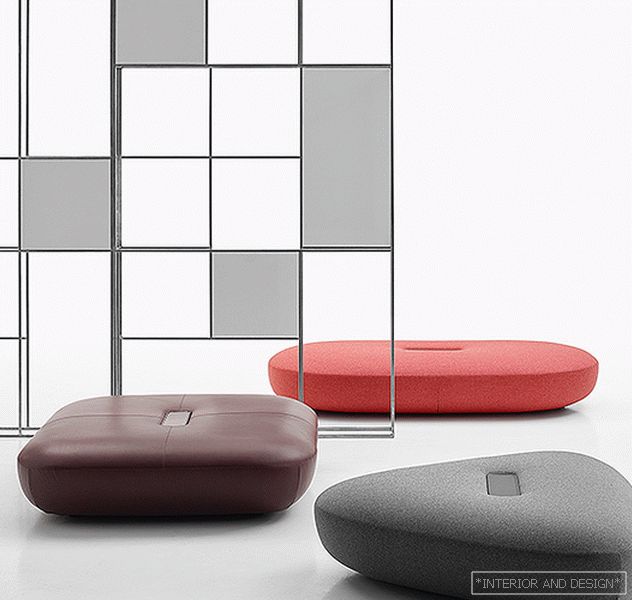 Ottomans Tabour, diz. Doshi Levien. Three different in shape and thickness of the subject form a single ensemble.
Ottomans Tabour, diz. Doshi Levien. Three different in shape and thickness of the subject form a single ensemble. Nipa and Jonathan appreciate optimistic non-finishing objects. It is no coincidence that the textbooks of the 1950s found a place in their home - George Nelson's sofa, Eero Saarinen's desk, Charles and Ray Imz shelving. Own armchairs, mirrors, tables and interior accessories of Doshi Levien - bright colors, sometimes with a slight ethnic accent - are perfectly combined with light objects of the post-war decades.

